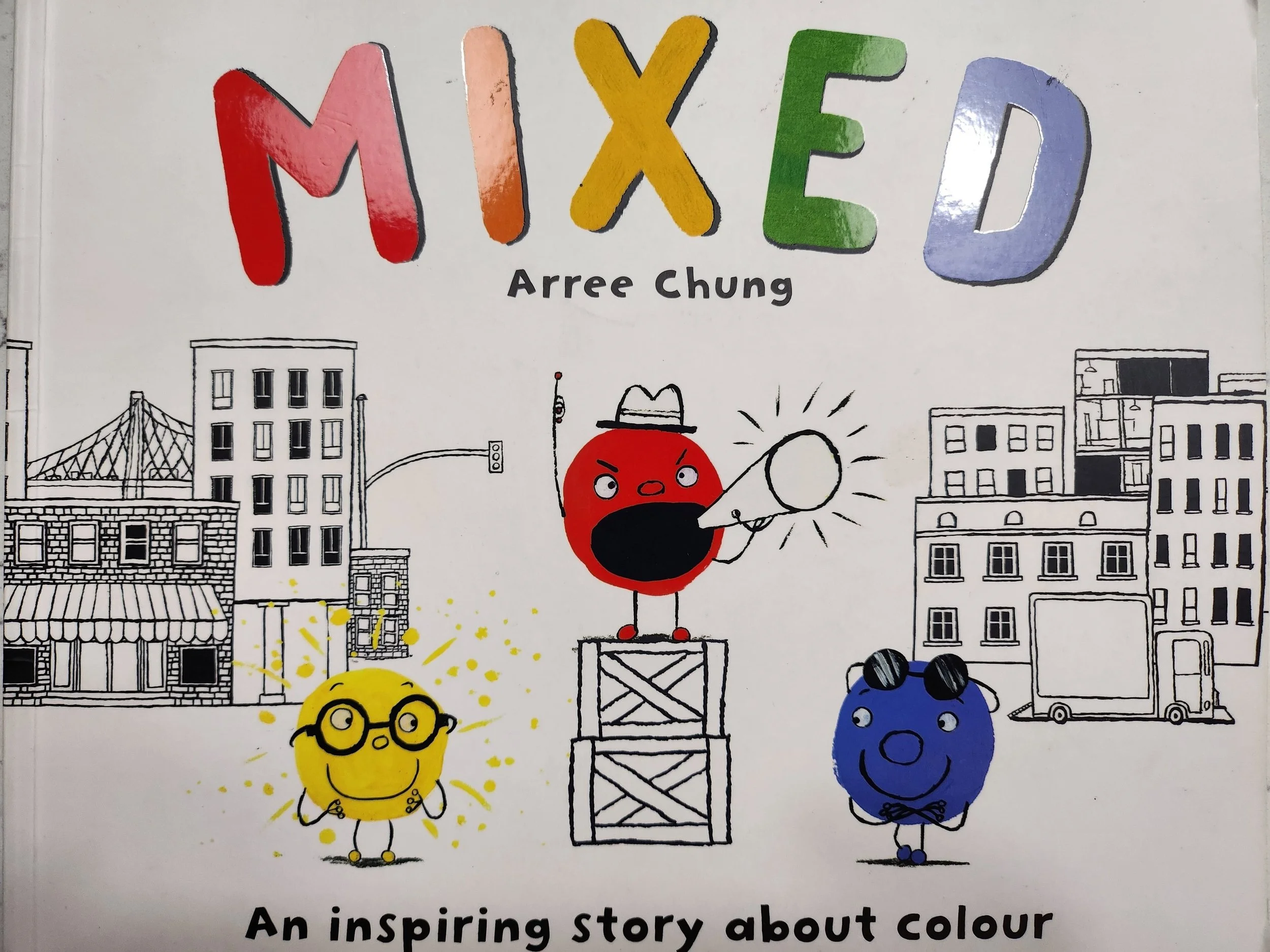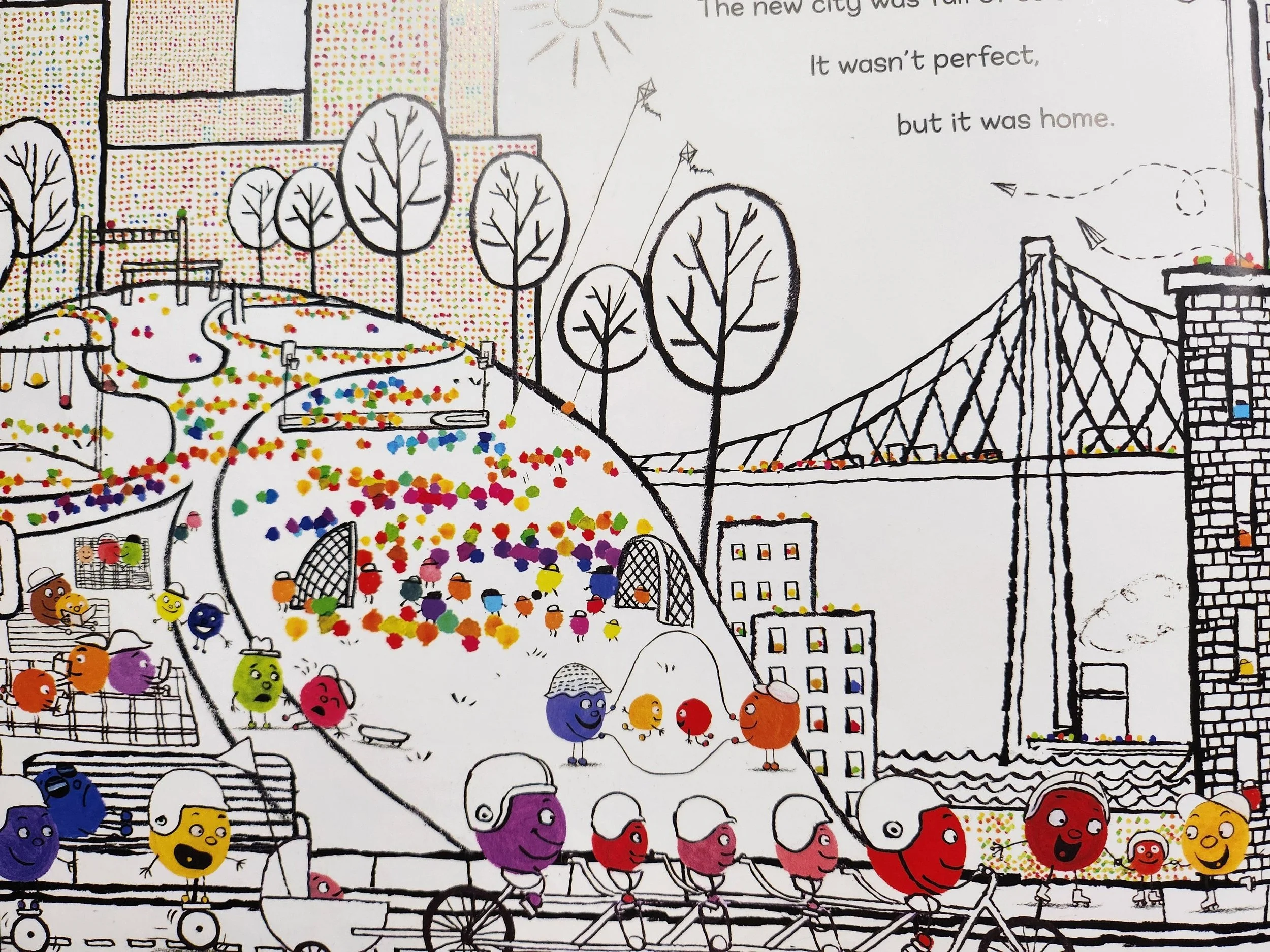For the love of books: Mixed
This week I’m looking at a book which is great for exploring diversity and addressing lots of issues around this. To quote the blurb,
“this inspiring story shows that understanding, love and acceptance make the world a better place.”
It’s a book that I think can be used across the whole of the Primary school phase as it looks at issues of prejudice in a child friendly manner and in a way that is extremely clear and straightforward to understand. In terms of building children’s ability to interpret what it means to be unique and be aware of the fact that everyone is different and special in their own way, it really does stand out as a book that could be used in schools. It celebrates differences, explores the disagreements and problems that can arise from those differences, and demonstrates that, in the end, there is always a way through to overcome disagreements of opinion and how to act, and that your appearance doesn’t matter. This is extremely apt within schools, as we have settings filled with children from different backgrounds, social standing and ethnicity. By their very nature, children fall out all the time over lots of different things as they begin to find their way through life’s different social situations. I think it is often easy to forget that children in Primary schools are still so young and still have so much to learn about interacting with one another. It’s a great story, written in a wonderful and witty manner, and makes it ‘okay’ to fall out with one another as long as in the end you overcome your differences.
Mixed by Arree ChungThe story
So ‘Mixed’ is a story that begins with three colours: the reds, yellows and blues. The reds were the loudest, the yellows were the brightest and the blues were the coolest. For the most part, they all got along really well until they each started to think that they were better than the other. This is something that I think children will relate to in all sorts of situations, whether about the way they look or how good they are compared to others at different things. When this happens, children cause division within the class or friendship group (adults are very good at this too). And so in the story, exactly that happens. Each colour claims a part of the city and makes it their own, deciding to live separately from one another.
The next part of the story gets a little bit Romeo and Juliet. A yellow notices a blue who is sad, they become friends who make each other better and they become attached to one another. The other colours can’t understand why. They cause all sorts of fuss about it and declare their unhappiness towards each other. Then, as the title suggests, as a result of the yellow and blue who ‘mix’, they get married and create a new colour. The colour green. And the colour green was bright like the yellows and calm like the blues. A key line in the book comes next:
“The colours began to see new possibilities”
And I think this is so important when we talk about issues, whether they are simple classroom disagreements, or more significant discussions about diversity, prejudice and race. The possibility for interaction with others is open and endless, and the book really does well to introduce this idea that we have to be open minded and open to the possibility of change and that difference, or as I prefer ‘uniqueness’ should be celebrated. The colours all fall in love with green, and then they see the possibilities and they begin to mix too. It’s a really lovely way of showing the children that its good to be different and that through our differences we can become better people, share our knowledge and understanding and ultimately be happier. The story ends with a range of different colours and shades of colours living together happily and in harmony, and I’d like to think that the majority of people in our world would want that end point. I’m not naïve enough to ignore the issues around diversity and race that we face as a population, but I think this book is a lovely representation for children of how we should aim to overcome our differences.
Black and white vs colour
One of the things that I think is designed very cleverly in this book is the illustrations. Set in a black and white city, the initial colours of red, yellow and blue stand out really clearly and you can see the contrast between them. Its simple, but it’s genius. It highlights the differences in appearance really vividly and sets the story up ready for the issues that arise when the colours start to consider their differences. My perception is that it emphasises just how different everyone is in terms of appearance, character, personality, the way we act. And then the beauty of all of this is just how colourful the book becomes in the end, with everybody realising that being different or having different views and opinions is okay. I think it’s really clever. Whilst we all stand out, in reality none of us truly stand out because we are all different. Or vice versa depending how you want to look at it – we all stand out and we are all unique, special and individual and that this should be celebrated. This is why I love picture books so much, particularly for Primary schools. The phrase ‘ a picture says a thousand words’ is extremely poignant here, as the final few images really do tell a story of celebrating everyone!
Cross curricular themes
The other great thing about this book is that you can use it in the classroom for so many things. Younger children could retell the story, possibly choosing different colours to start with or changing the things that they think they are better at, and seeing how their imagination unfolds in their own writing.
It’s great for drama. Children could become the different colours and hold debates about why they are better than the others. A cross debate would give children the chance to change their mind about which colour they would prefer to be, leading to children realising that it is good to have a mix of attributes in your locker and not just to be one thing. Obviously this could influence debates on prejudice and discrimination, a topic that we shouldn’t be shying away from and is really important across teaching and schools today.
It’s also obviously great for teaching about colour mixing in art. I’ve used it before whereby children create prints with their fingers by mixing colours in a way that best represents them and their feelings and personality. Colours are often linked to emotions, and often our emotions inspire the art work that both adults and children create.
All in all, a wonderful book. Beautifully illustrated with the contrast of the black and white cityscape versus the colour of individuality. A cleverly crafted storyline to help children both relate to the characters and inspire them to be themselves and allow others to do the same. And lots of opportunities for use in the primary classroom. What do you think?



